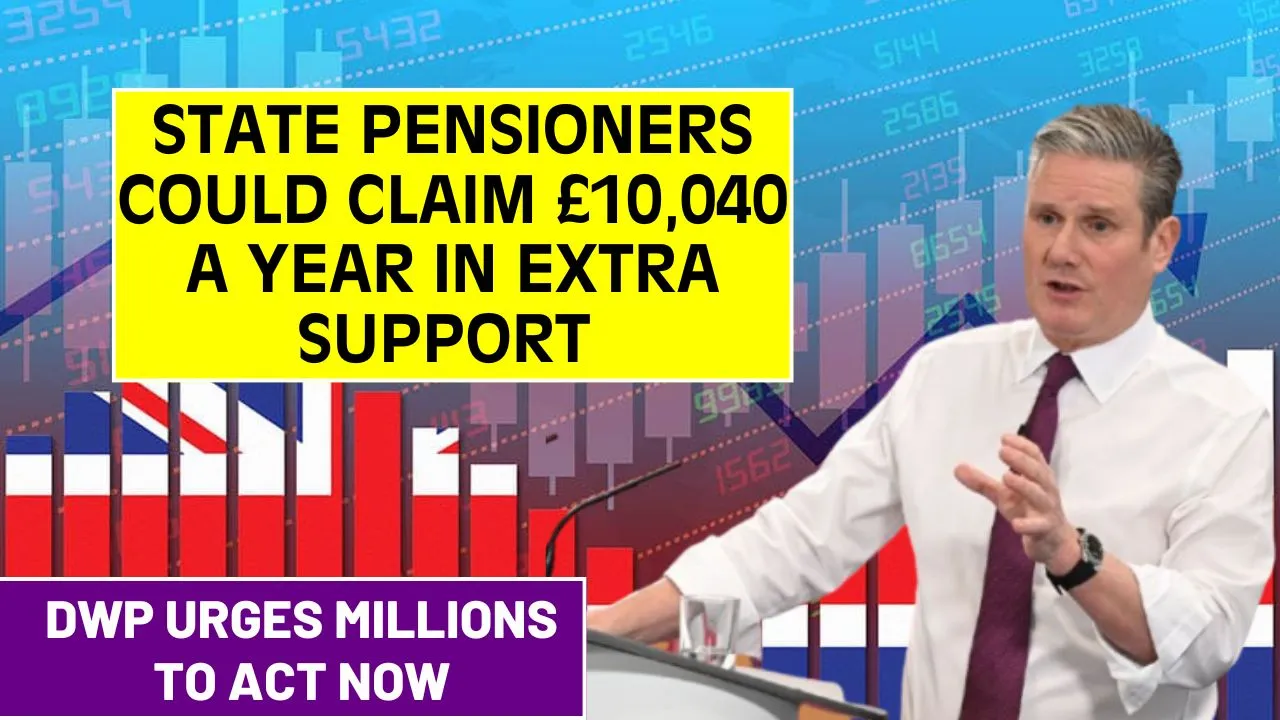£221.20 Weekly State Pension 2025: The £221.20 Weekly State Pension 2025 is bringing a wave of financial relief for many retirees in the UK. Beginning in June 2025, this updated payment rate promises to ease financial stress for those who meet the government’s eligibility criteria. But not everyone will qualify for the full amount, and many are unaware of how much they’re truly entitled to receive.
This article aims to clear up the confusion. We break down who qualifies for the full pension, how to check your contributions, and how to top up your National Insurance record. Whether you’re approaching retirement or just starting to plan, understanding your State Pension rights is essential to securing long-term financial stability.
£221.20 Weekly State Pension 2025
The £221.20 Weekly State Pension 2025 is part of a wider government initiative to support retirees by increasing pension payments through the triple lock system. In 2025, the payment will jump to £230.25 per week due to a 4.1% rise in average earnings. This article covers everything you need to know about this increase: what it means for your retirement, who is eligible for the full rate, and how you can still improve your payout even if you don’t qualify for the maximum amount. We’ll also explore how you can claim your pension and what factors might reduce your entitlement.
Overview Table
| Feature | Details |
| New Weekly State Pension (2025) | £230.25/week |
| Current Payment (2024) | £221.20/week |
| Annual Payment Value | £11,973 |
| Minimum NI Years Required | 10 years |
| Full Pension NI Years Needed | 35 years |
| State Pension Age | 66 (rising to 67 by 2028) |
| Calculation Method | Triple Lock (4.1% increase) |
| Basic State Pension (older cases) | £176.45/week |
What’s Changing in 2025?
A major change in 2025 is the rise in State Pension payments to £230.25 per week. This is a result of the triple lock system, which ensures the pension rises by the highest of three metrics: inflation, wage growth, or a fixed 2.5%. For 2025, average earnings rose by 4.1%, prompting the boost.
This increase not only provides additional income to millions but also attempts to keep pace with the rising cost of living. It’s especially crucial for retirees on fixed incomes, as it helps protect the value of their pension against inflation.
What Is the State Pension?
The State Pension is a regular government payment made to individuals who have reached the qualifying age and have a sufficient record of National Insurance contributions. It serves as a financial safety net during retirement.
There are two main types of State Pension:
- Basic State Pension: For those who reached pension age before April 6, 2016.
- New State Pension: For men born after April 6, 1951, and women born after April 6, 1953.
This article focuses on the new State Pension, which most upcoming retirees will receive. From June 2025, those who qualify for the full payment will receive £230.25 weekly.
How Is the Increase Calculated?
The triple lock ensures pension payments rise annually based on the highest of:
- Inflation (Consumer Price Index),
- Average earnings growth, or
- A guaranteed minimum of 2.5%.
In 2025, wage growth led at 4.1%, meaning pensions will increase in line with earnings. This approach helps pensioners maintain their purchasing power, especially during times of rising prices and economic uncertainty.
The triple lock system has become a core part of pension planning, offering stability for long-term retirees.
Who Is Eligible for the Full £230.25?
To receive the full £221.20 Weekly State Pension 2025 increase, there are specific conditions:
- You must have at least 35 qualifying years of National Insurance contributions or credits.
- You must have reached the State Pension age, currently set at 66.
- You should not have been contracted out of the Additional State Pension in the past.
Even if you don’t meet all these conditions, you might still receive a partial payment if you’ve contributed for at least 10 years. Anything less than 10 years means you will not receive any State Pension.
What Counts as a Qualifying Year?
A qualifying year is any tax year in which you:
- Worked and paid NI contributions,
- Were self-employed and paid Class 2 NI,
- Received NI credits (for caregiving, maternity leave, or unemployment),
- Claimed benefits linked to National Insurance contributions.
If you’ve taken time off work or lived abroad, it’s possible you have gaps in your record. These gaps can often be filled with NI credits or voluntary payments, which we’ll cover next.
Why Might You Receive Less?
Several common factors can reduce your pension amount:
1. Contracting Out
Before 2016, many employees paid lower NI contributions by contracting out of the Additional State Pension. This was often done through private pension schemes. As a result, you may now receive less from the State Pension.
2. Gaps in Contributions
If you had low-income periods, were self-employed without full contributions, or didn’t claim qualifying benefits during time off, your record might have missing years. These gaps can prevent you from reaching the 35-year threshold needed for the full pension.
How to Boost Your State Pension
It’s not too late to increase your future payments. Here are some proven methods:
- Pay Voluntary NI Contributions: You can back-pay up to six years, and in some cases until 2006. Each year adds approximately £5.55 to your weekly pension—equivalent to around £288.60 annually.
- Claim Missing NI Credits: If you were a carer, on parental leave, or receiving benefits, you might be eligible for NI credits to cover the gaps.
- Defer Your Pension: If you delay claiming after your qualifying age, your pension increases by about 5.8% per year. This can be a strategic option for those who don’t need immediate income.
- Get Financial Advice: Especially if your pension history involves working abroad or contracting out, a pension advisor can help you make the most informed decision.
How to Claim the State Pension
The State Pension does not begin automatically—you must claim it. The process is straightforward:
Ways to Apply:
- Online via the GOV.UK pension portal,
- Phone by calling the Pension Service,
- Post by requesting a claim form.
What You’ll Need:
- Your National Insurance number,
- Bank account details,
- Proof of identity.
You’ll receive a notification about 4 months before your State Pension age, reminding you to apply.
FAQs
How can I check if I’m eligible for the full pension?
You can use the “Check your State Pension” tool on the GOV.UK website to see your current forecast and how many qualifying years you have.
Can I still get the pension if I haven’t worked much?
Yes, if you’ve received benefits or been a carer, you may have earned NI credits. Check your NI record to see what counts.
Is it worth paying voluntary NI contributions?
Absolutely. Even one extra year can increase your weekly income for life. Over time, it’s a great return on investment.
When does the new rate start?
The new payment of £230.25 per week begins in June 2025 for all eligible pensioners under the new scheme.
Can I claim if I’m living abroad?
Yes, in many cases. But your eligibility and payment amount may depend on the country you reside in.
Final Thought
The rise to £221.20 Weekly State Pension 2025, increasing to £230.25 per week, marks a positive shift for many retirees—but only for those who qualify. Understanding your eligibility, knowing how to boost your payments, and claiming on time are all vital steps to securing your financial future.
If you haven’t yet checked your National Insurance record, do it today. Small actions now could mean thousands more in your pocket during retirement.
We’d love to hear from you—have questions or personal tips? Leave a comment and let’s talk about it. And if you’re planning for retirement, explore more tools and advice through our related resources.












